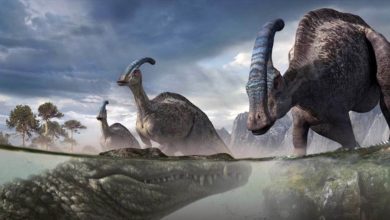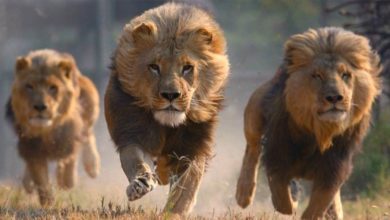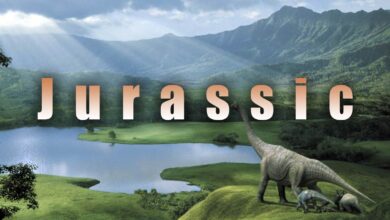Mammoth (Mammuthus) – a prehistoric elephant
The mammoth – 12 tons of weight, 4 meters (13 ft) of height at shoulders, and 5 meters (16 ft) long tusks that could have scared off many predators but were used mostly for unearthing plants from the frozen ground. Therefore, it is not strange that such enormous and extinct animals still arouse curiosity both among scientists and ordinary people.
The word “mammoth” is mostly associated with the woolly mammoth which died out at the end of the last Ice Age. The majority of mammoths, however, did not have any hair.
Mammoths died out thousands of years ago. The only information about them comes from various excavations and archaeological discoveries. So, what were the main features of this prehistoric elephant?
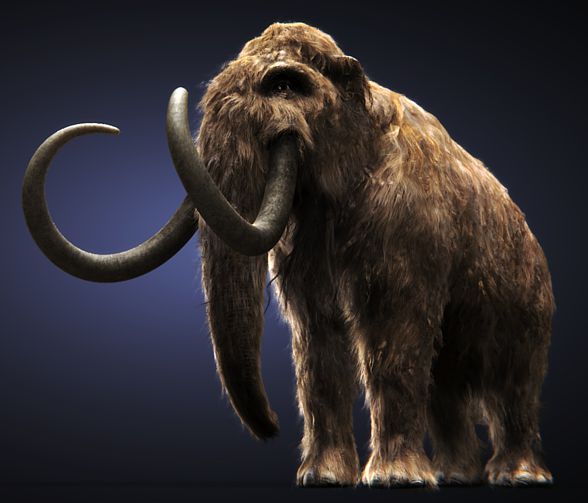
Classification
- Kingdom: Animalia
- Class: Mammalia
- Order: Proboscidea
- Family: Elephantidae
- Genus: †Mammuthus
Species
12 species of mammoths have been distinguished so far:
- African mammoth (Mammuthus africanavus)
- African mammoth (Mammuthus subplanifrons) – the oldest representative of the genus Mammuthus
- Columbian mammoth (Mammuthus columbi)
- Cretan dwarf mammoth (Mammuthus creticus)
- Imperial mammoth (Mammuthus columbi imperator)
- Jefferson’s mammoth (Mammuthus columbi jeffersoni)
- Pygmy mammoth (Mammuthus exilis)
- Southern mammoth (Mammuthus meridionalis)
- Steppe mammoth (Mammuthus trogontheri)
- Woolly mammoth (Mammuthus primigenius)
- Mammuthus lamarmorai
- Mammuthus rumanus
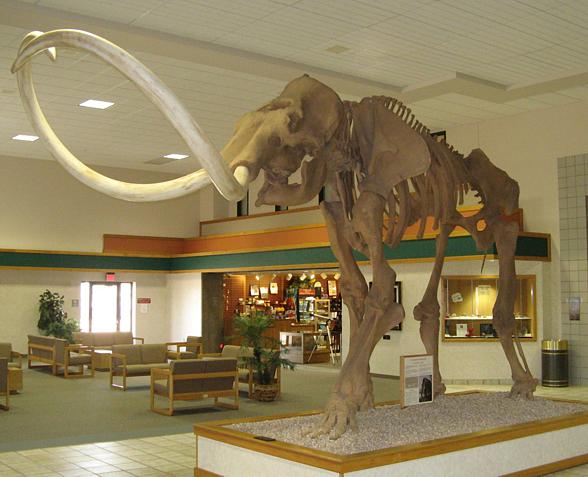
Occurrence
According to researchers, the oldest Proboscidea inhabited Earth already about 55 million years ago. It is also known that the Elephantidae settled for good in Africa 6 million years ago. Apart from that, mammoths could be found in Europe, Asia and America – to southern Mexico.
Evolution
Mammoths lived on Earth for about 5 million years – starting from the Pliocene epoch (5 million years ago) and to the Holocene (4.5 thousand years ago).
Until now, the researchers have found the remains of all species of mammoths, therefore, the process of their evolution has been known. As it has turned out, the easiest way to analyze it is by looking at… the teeth!
The oldest individuals of the extinct species were much more primitive, and therefore, their teeth were also poorly developed. On this basis, it can be stated that the first known mammoth species was Mammuthus subplanifrons that had lived in Africa, and one of the last in this line was Mammuthus primigenius found in Siberia, namely, the woolly mammoth.

Size of mammoths – their weight and height at shoulders
Like their modern-day descendants, mammoths were quite large. The largest of them (the steppe mammoth (†Mammuthus trogontherii)) exceeded the height at the shoulders of 5 meters (16,40 ft) and weighed about 10 tons (22046 lb).
Exceptionally strong males (bulls) reached the weight of up to 12 tons (26455 lb) (as a reminder, the largest African elephant (Loxodonta africana) weighed 12.7 tons (27998 lb)and was 4.2 meters (13,78 ft) of height at shoulders). The average weight and height at the shoulders of mammoths were, therefore, very similar to those of today’s African elephants.
The majority of species, however, were not taller than 3 meters (9.8 ft), and they weighed 5.4 (11904 lb) tons on average.
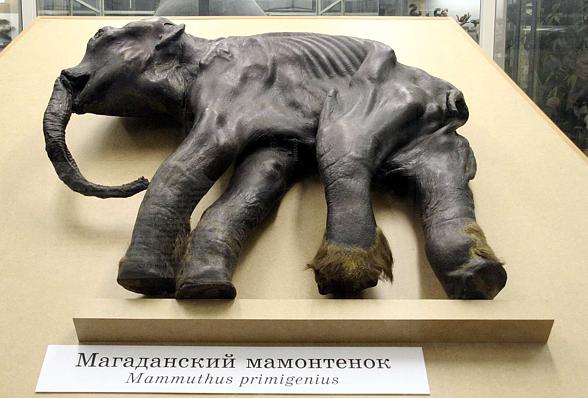
Mammoth tusks
Both males and females had tusks. They used to develop at about 6th month of life, and after 18 months they were replaced by permanent counterparts. Their length would increase with age – usually by from 2.5 to 15 cm (0.98 to 5.9 in) a year. Tusks, which were actually the incisor teeth of mammoths, used to reach the length of 5 meters (16.4 ft), and were used mostly for unearthing plants in winter time.
Did all mammoths use to be hairy?
The majority of mammoths did not have any hair. The woolly mammoth (†Mammuthus primigenius) was the only mammoth covered with long hair, and that’s why the majority of people think that all mammoths were the same.
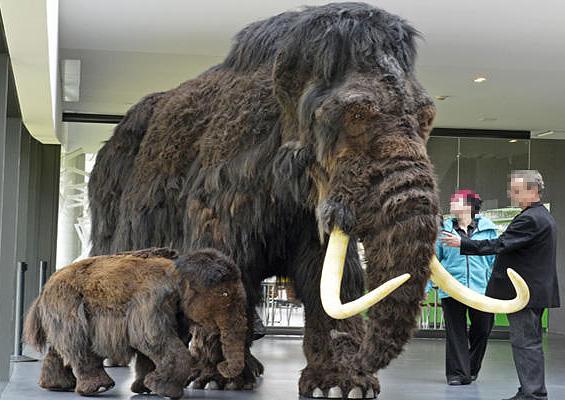
Mammoths – predators or herbivores?
Mammoths, because of their large tusks, could have been perceived as extremely dangerous animals. However, it turns out that they used to feed on branches of trees such as alder, willow, and small herbaceous plants.
Why did mammoths have so small ears?
Mammoths, contrary to their living descendants, had exceptionally small ears. It is probably because the climate used to be different when these animals lived on Earth. Nowadays, elephants (especially the African ones) use their large ears to cool themselves down – mammoths didn’t need that.
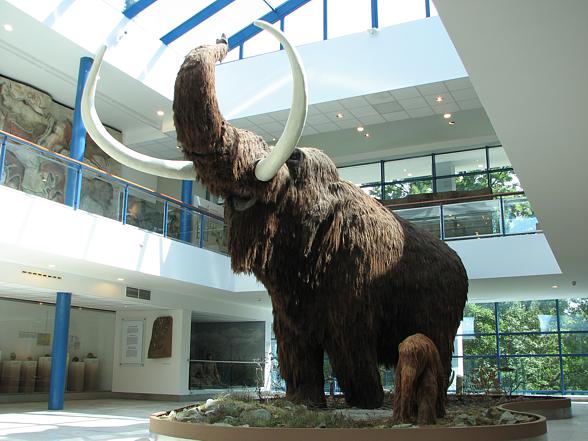
Mammoth community
On the basis of the studies on living Elephantidae, the researchers established that the gestation period in mammoths used to last 22 months, and only one calf was always born. The social structure of mammoths resembled that of African and Asian elephants. Females lived in herds, which they also were the leaders of, and males existed alone or formed groups after becoming sexually mature.
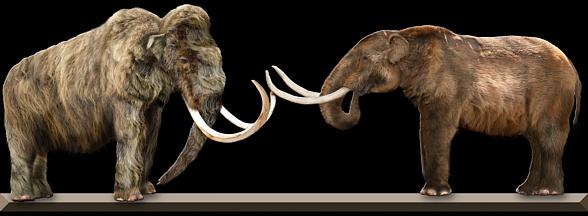
The last of mammoths
The youngest and best-known species of mammoths was the woolly mammoth (†Mammuthus primigenius) that went extinct in Europe about 13 thousand years ago in Siberia, and about 10-10.5 thousand years ago in North America.
Until now, it has been claimed that the last specimen perished from Siberia about 12 thousand years ago, but it is also possible that these mammoths lived 2 thousand years more.
A small population of mammoths survived on St. Paul Island, Alaska, up to 3750 BC, the mammoths that lived on Wrangel Island (Russian: Остров Врангеля) lived almost 2 thousand years longer – to 2000 BC.
The tusks of the largest mammoths reached over 4 meters in length. Some sources say that they could have been even 5 meters long (16ft 5in).
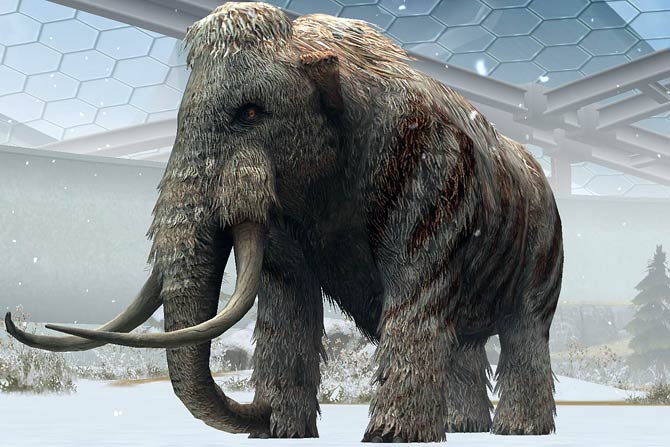
The cause of mammoths’ extinction
Until now, researchers couldn’t agree on one, valid cause of mammoths’ extinction. However, 3 hypotheses are the most likely.
Hypothesis 1 – lack of adaptation
The first hypothesis assumes that these large animals couldn’t manage to adapt to the changing climate at the turn of the Pleistocene and Holocene epochs.
Hypothesis 2 – an epidemic
The second cause assumes a mysterious disease or epidemic that caused the death of the whole population.
Hypothesis 3 – human as the cause of mammoths’ doom
The third hypothesis suggests that humans were the cause of mammoths’ extinction, because they hunted them often. Mammoth meat was popular among prehistoric people, which has been proved by numerous cave paintings presenting pursuit scenes.
Therefore, mammoths could have gone extinct because of one or several of the above factors.
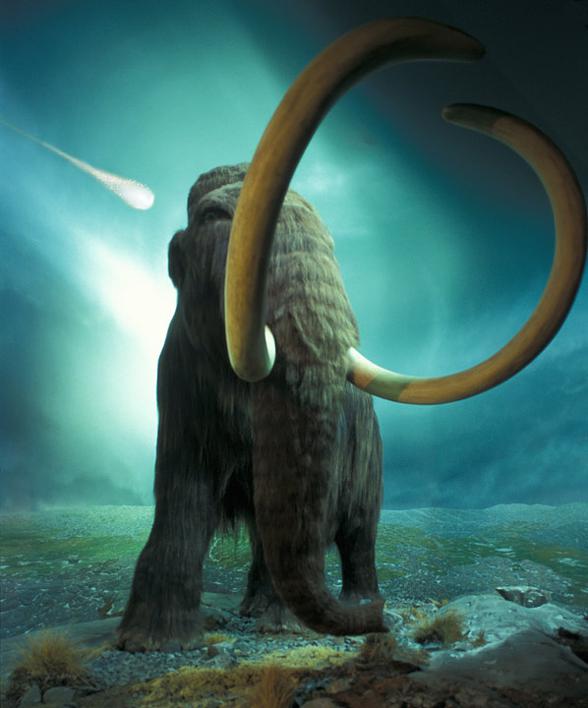
Steppe mammoth (†Mammuthus trogontheri)
- Height at shoulders: 4.5 m (max. 5 m) / 14.7 ft (max 16.4 ft)
- Weight: about 10 tons (max. 12 tons) / 26455 lb
- Occurrence: Europe and Asia
- Epoch: Pleistocene 600 thousand – 370 thousand years ago
- It had slenderer stature than the woolly mammoth
Columbian mammoth (†Mammuthus columbi)
- Height at shoulders:
- males: 3.7-4 m (12-13 ft)
- females were slightly smaller than males
- Weight: 7-9 tons (max. 10 tons) / 15432-19841 lb (max. 22046 lb)
- Tusk length: to 4.25 m (14 ft), according to some sources to 5 m (16.40 ft)
- Occurrence: North America
- Epoch: Pleistocene 1.6 million – 12.5 thousand (probably even 7.8 thousand) years ago
- It originated from the southern mammoth
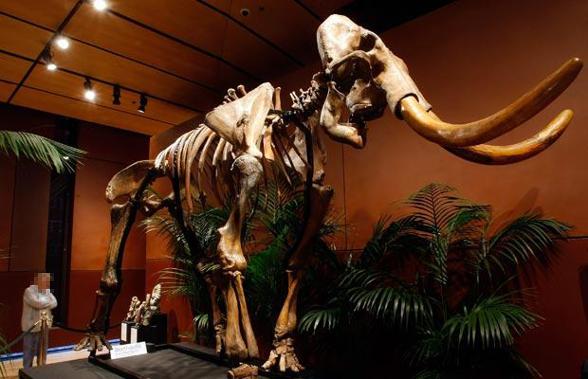
Woolly mammoth (†Mammuthus primigenius)
- Height at shoulders:
- females: 2.6-2.9 m (8.5-9.5 ft)
- males: 2.7-3.4 m (9-11 ft)
- Weight: 4-6 tons
- Lifespan: 60 – 80 years (average 60 years)
- Occurrence: Europe, Asia, North America
- Epoch: Pleistocene 250 thousand – 10 thousand years ago
Southern mammoth (†Mammuthus meridionalis)
- Height at shoulders: about 4 m (13 ft)
- Weight: about 10 tons
- Occurrence: Europe, Asia – later North America
- Epoch: Pleistocene 2.5 million – 1.5 million years ago
- It was one of the first mammoths that had appeared on Earth. The Columbian mammoth and southern mammoth originated from it.
- It could have had hair, and if it did, it was certainly less dense than in the woolly mammoth.
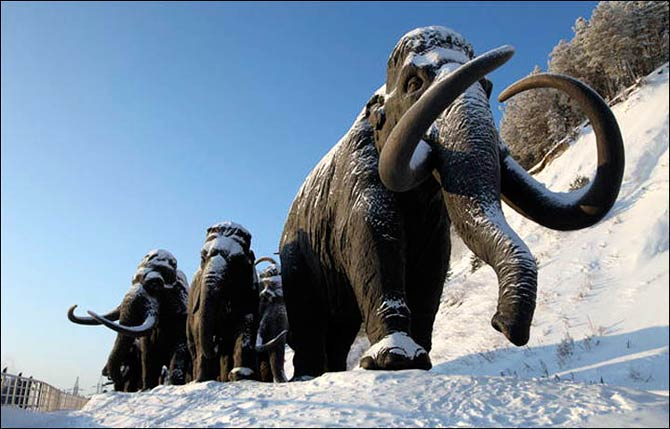
Recreating (cloning) mammoths
The chances of recreating the mammoth have been increasing. Russian scientists have found a frozen mammoth female that froze about 10 thousand years ago. The female was – as the scientists have estimated – about 60 years old when she died.
The mammoth found in Siberia was preserved in perfect condition, and some blood was found in the pit under the animal. Thanks to this discovery, the moment of recreating these animals may occur much sooner. Maybe it’s the first step to create a real park where we can see not only mammoths, but also dinosaurs?
We have known the genome of the woolly mammoth
“Nature” magazine has published the information that scientists managed to sequence the genome of the woolly mammoth.
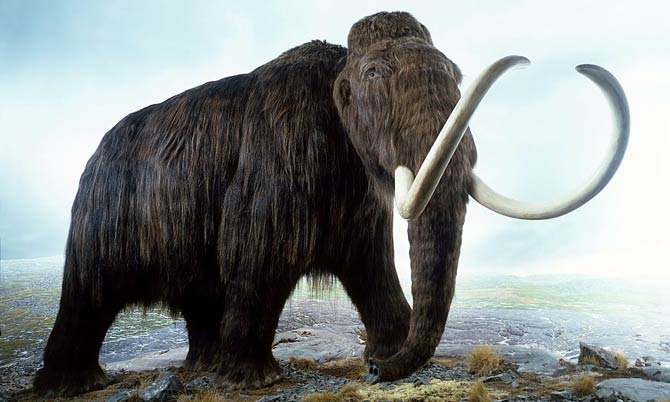
Humps and sloping backs
A sloping back with a high shoulder hump resulted from the spinous processes of the back vertebrae decreasing in length from front to rear. These features were not present in juveniles, which had convex backs like Asian elephants.
Hump
Woolly mammoths also had thick layers of fat to protect them from the elements, including a hump of fat much like those seen in modern-day camels. This hump would have helped them store energy during long Arctic winters without sunlight.
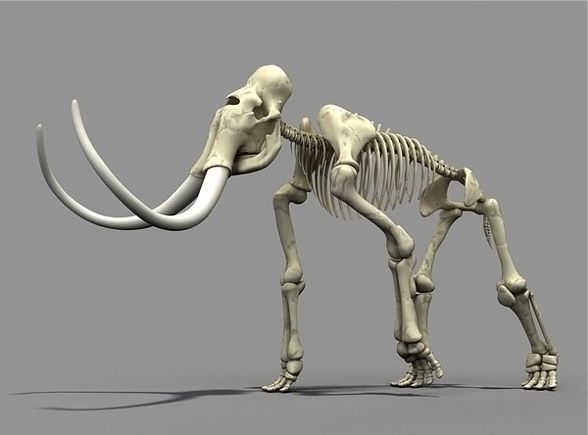
Mammoths – interesting facts
- The first fully preserved mammoth was found in Siberia in 1901. There were not only bones, but also fur, muscles and skin.
- Although there is no evidence – few mammoths could have survived to modern times. It has been proved by records of 17th-century travelers, and testimonies of pilots who while flying over Siberia saw a herd of elephants.
- Japanese scientists claim that they are able to resurrect the mammoth over a few years. It’s all thanks to the DNA that was taken from the specimen from the Russian laboratory.
- An extraordinary mammoth mummy has been recently found in Yakutsk in Siberia. A young, 2.5-year-old mammoth female was probably killed by humans and wolves that had inhabited the areas of modern-day Russia at that time. The specimen was preserved so perfectly that it will provide scientists not only with new information about mammoths, but also about life in the Ice Age.
- The best-preserved mammoth is a one-month-old woolly mammoth calf (Mammuthus primigenius) that suffocated 42 thousand years ago in Siberian mud.
- Mammoths crossed long distances depending on the season, searching for a better shelter for winter, and food.
- Mammoths lived also in the areas of modern-day Poland. The majority of their skeletons were found in southern Poland.
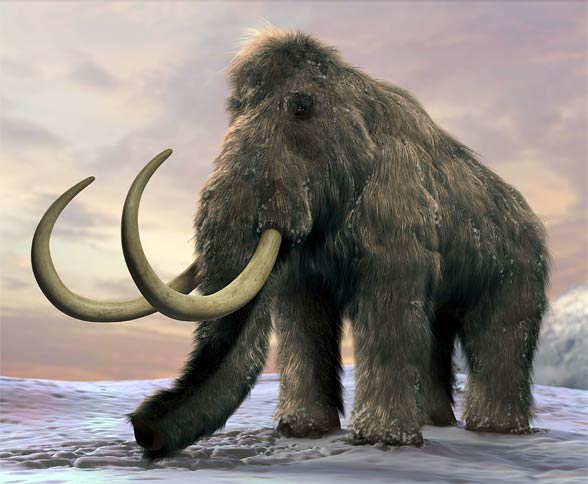
Recommended
- Extinct animals
- Elasmotherium
- African bush elephant
- Asian elephant
- Archaeopteryx
- Sarcosuchus
- Deinosuschus
- Animals & dinosaurs records
- The fastest animals – Top 100
- The fastest birds – Top 10
- The heaviest dinosaurs – Top 10
- The longest dinosaurs. Sauropods Top 10
- The longest predatory dinosaurs. Theropods Top 10
- The heavies predatory dinosaurs Top 10
- The longest and largest ornithopods
- The longest and largest ceratopsians
- The shortest sauropods
- The smallest dinosaurs – Top 10











